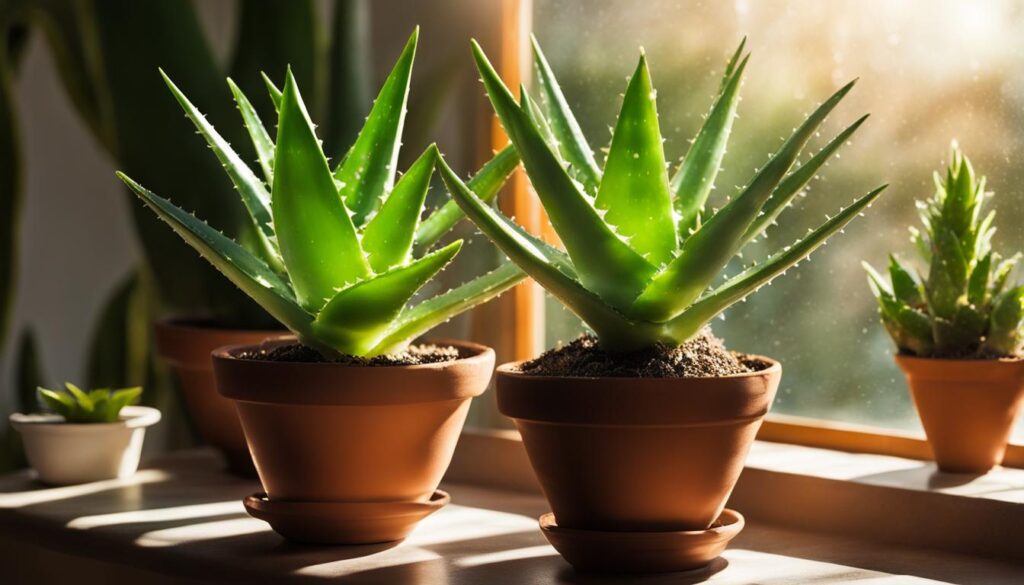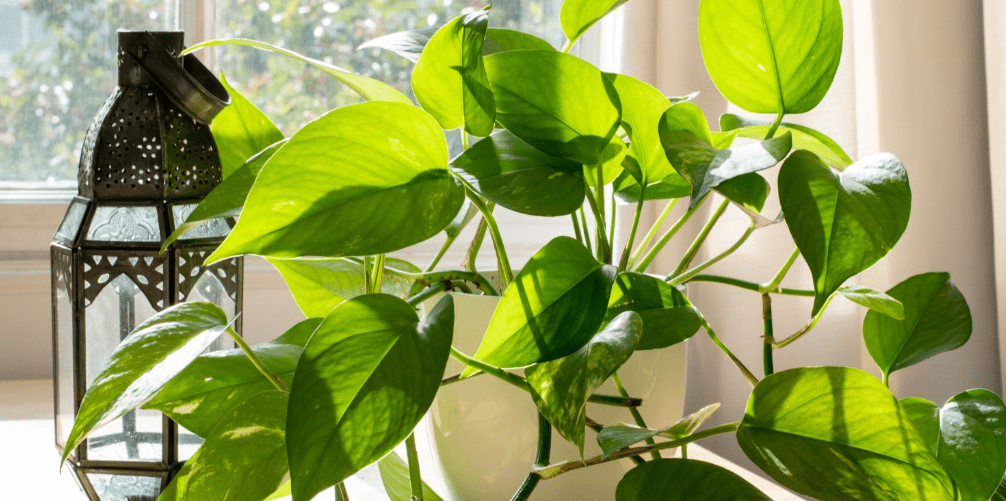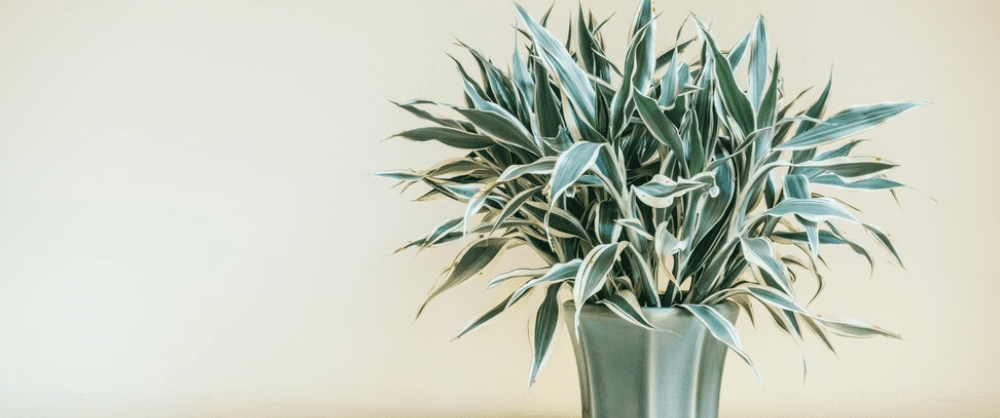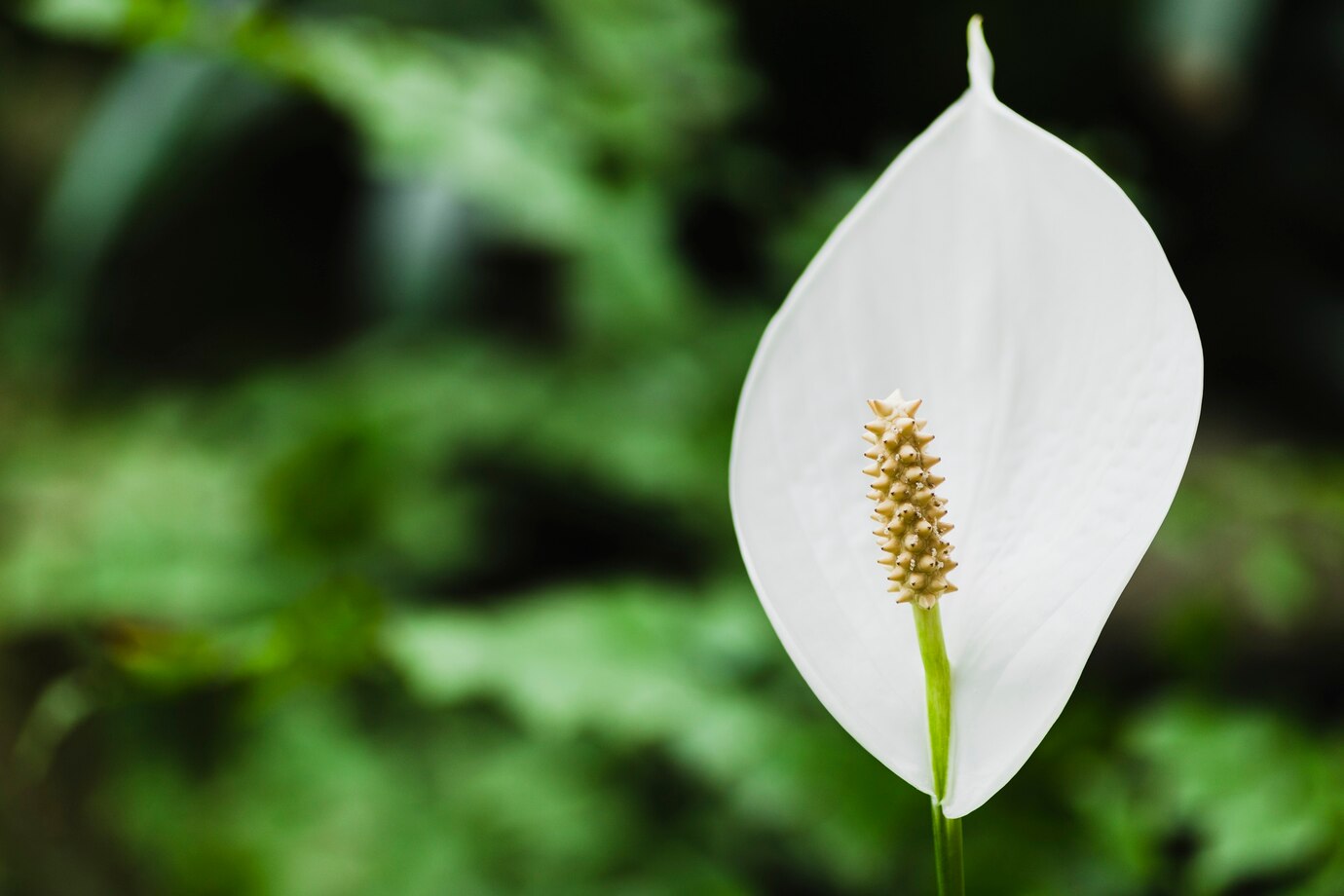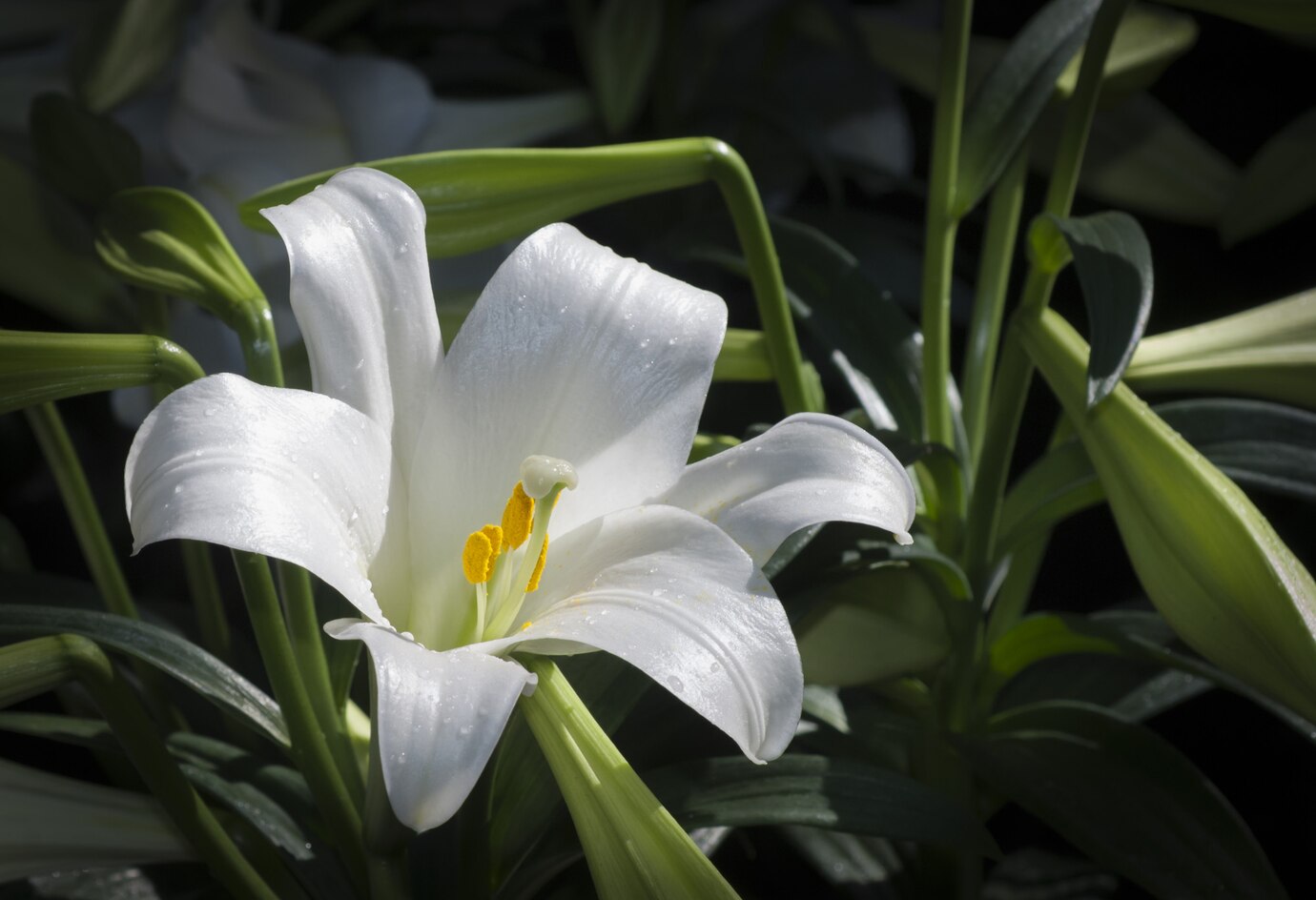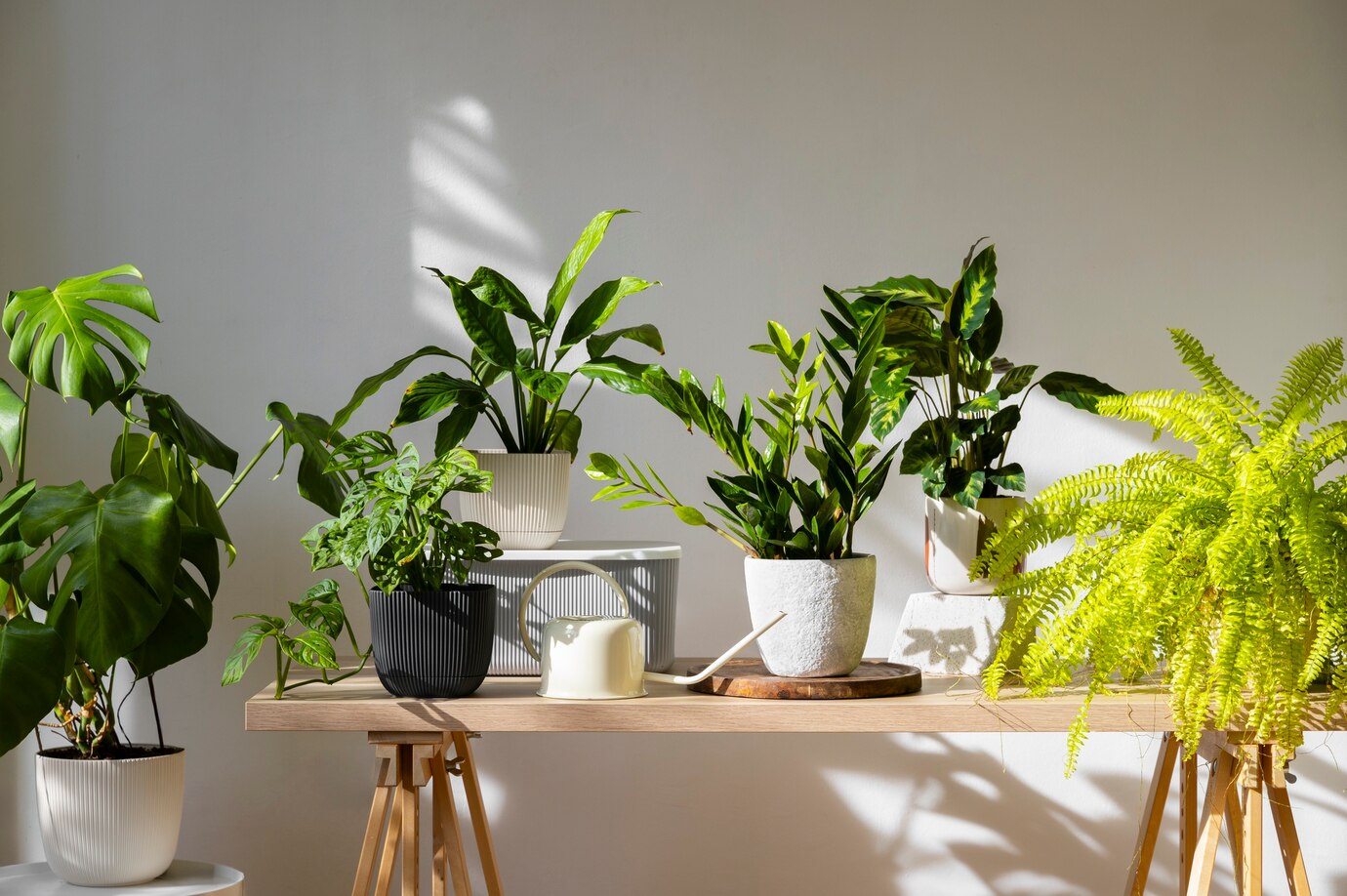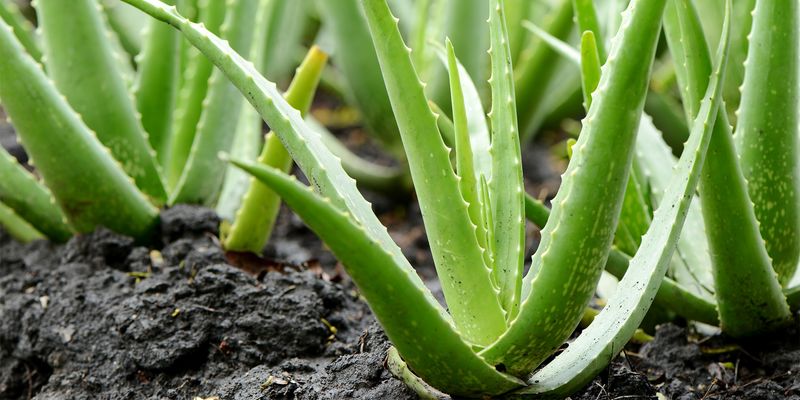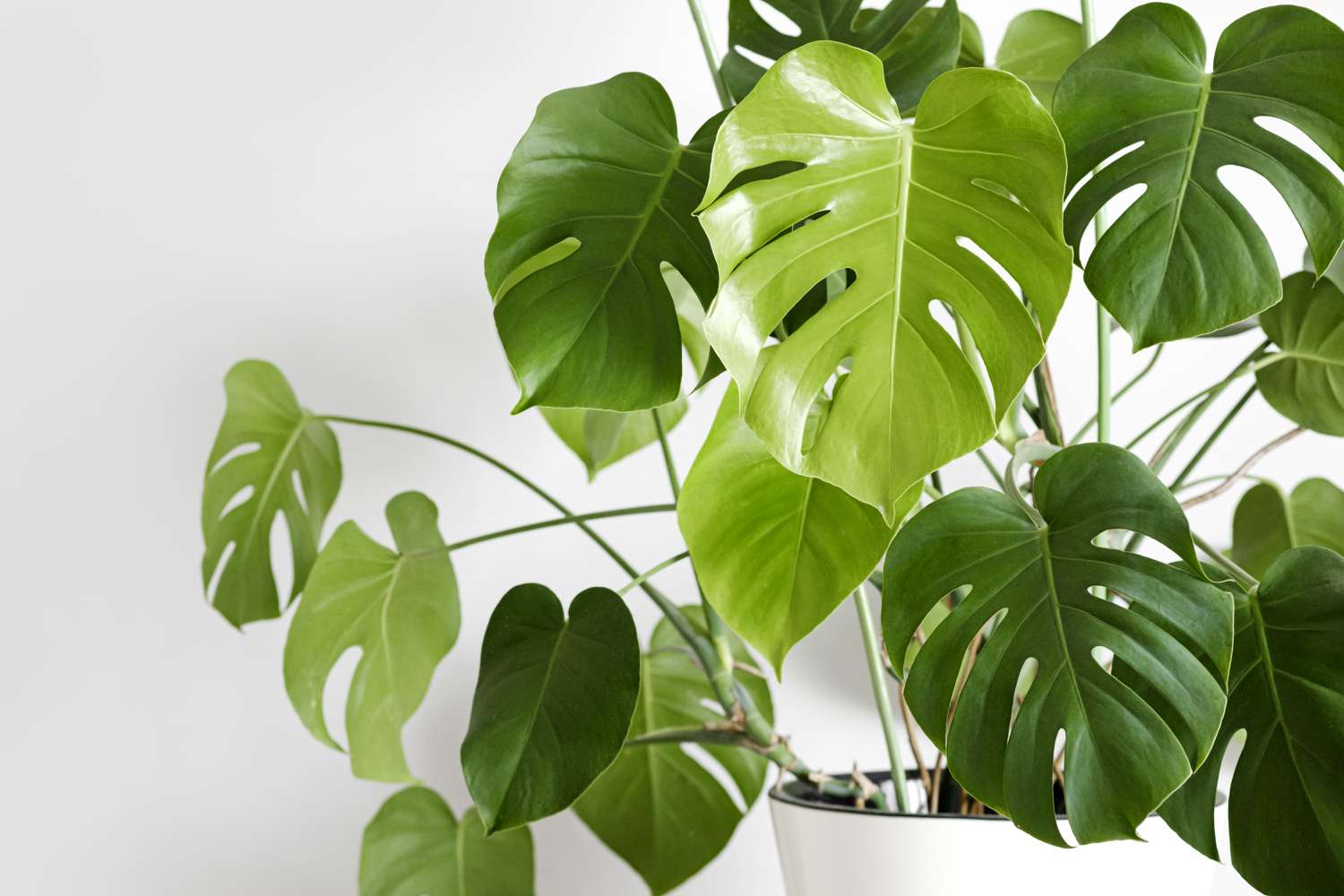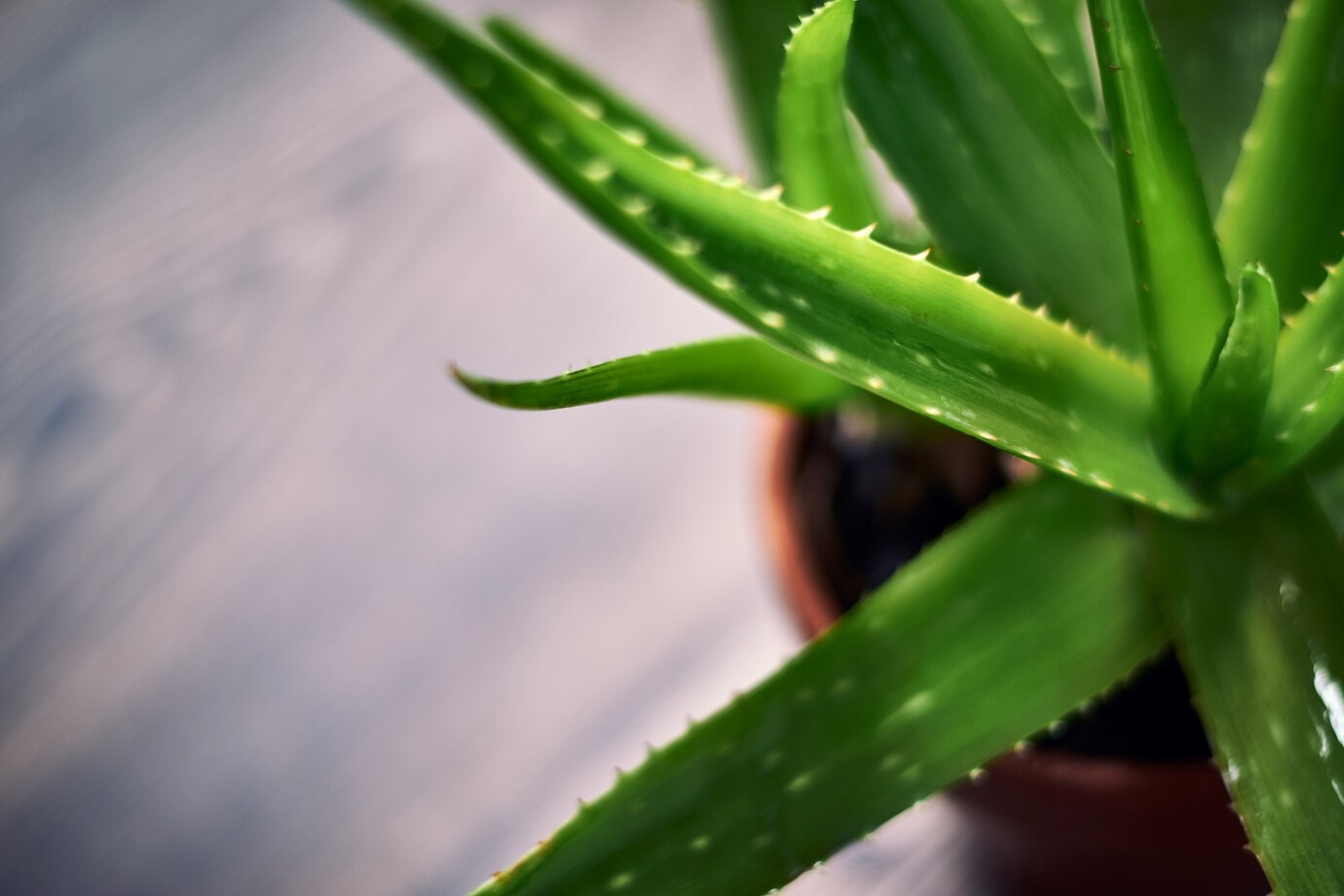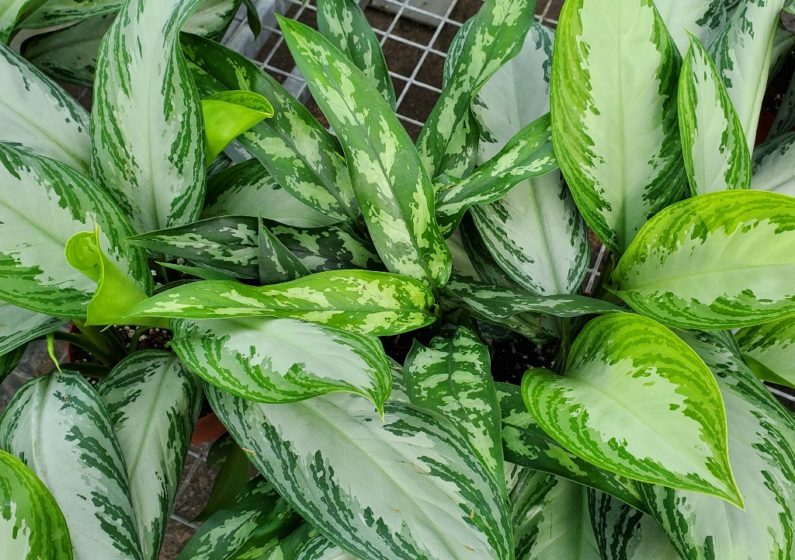Aloe vera is a soft, fleshy succulent that many people grow indoors. Its eye-catching, patterned leaves add charm to any space, and during summer, it produces tall stems topped with long-lasting yellow flowers.
Gardeners and natural health enthusiasts often value Aloe vera for its medicinal benefits. Its gel and extracts are used in various skincare products and alternative treatments, as it’s believed to have calming and healing effects. However, there’s limited scientific evidence for these claims. So, it’s always best to consult a healthcare professional before using Aloe vera for any health-related reason.
Now let’s compare indoor vs. outdoor Aloe vera and how to care for Aloe Vera both inside and outside.
Table of Contents
ToggleIndoor vs. Outdoor Aloe Vera
There are some key differences in care requirements when comparing indoor vs. outdoor Aloe vera. Indoors, set your Aloe vera in a bright area, ideally near a south—or west-facing window where it gets plenty of sunlight. You can move the plant outside to a sunny patio or balcony during the warmer months. Remember to bring it indoors before temperatures drop in early autumn, as Aloe vera is sensitive to cold.
How to Grow Aloe Vera Indoors
Aloe vera is a great indoor plant because it adapts well to different home conditions. Follow these tips to grow Aloe vera successfully inside your home.
Pot and Soil
To successfully grow Aloe vera indoors, choose a pot with proper drainage holes to avoid water buildup at the base. This succulent prefers loose, sandy soil that drains quickly and stays slightly acidic, ideally with a pH between 6.0 and 7.0. You can mix your own soil by blending equal parts of regular potting mix, coarse sand, and either perlite or vermiculite to boost drainage and airflow around the roots.
Light Requirements
Aloe vera grows well in bright, direct sunlight and needs at least six hours of light each day to stay healthy. Place your plant near a sunny, south-facing window or use a grow light if natural light is limited. Without enough sun, Aloe vera may stretch out and lose its compact rosette shape and become tall and loose over time.
Watering and Feeding
Since Aloe vera stores moisture in its thick, fleshy leaves, it doesn’t need frequent watering. In fact, overwatering is one of the most common mistakes with this plant. Only water when the soil is completely dry, usually every 2 to 3 weeks. In winter, cut back even more, as the plant slows down and enters a semi-dormant phase.
Aloe vera also doesn’t need much fertilizer. During spring and summer, feed it every 6 to 8 weeks with a balanced, water-soluble fertilizer diluted to half strength. Avoid overfeeding, as it can cause the plant to stretch out and weaken over time.
Pruning and Propagation
As Aloe vera grows, it can become large and a bit top-heavy. Regular pruning helps keep the plant neat and encourages healthy growth. Use a clean, sharp knife/shears or your fingers to remove any dead, wilted, or damaged leaves. You can also trim away the offsets, which are small shoots that appear around the base of the plant.
If you’re wondering how to propagate Aloe vera, it’s a simple process. Start by gently removing a pup or offset from the mother plant. Let the cut end dry for a few days until it forms a callous, which helps prevent rot. Once it’s ready, plant it in a well-draining soil mix and set it in a bright, warm spot.
Growing Aloe Vera Outdoors
Aloe vera can grow beautifully outdoors in warm climates. With the right care and conditions, it will thrive in your garden year-round. Here’s how to cultivate Aloe vera successfully in your outdoor space:
Site Selection and Soil Preparation
Select a bright spot in your garden with 6 to 8 hours of full sunlight each day. Aloe vera loves full sun and doesn’t tolerate soggy soil. If your soil is heavy or clay-rich, grow it in sandy, well-draining soil with a slightly acidic pH for best results. Mix in compost or coarse sand to improve drainage and aeration before planting.
Planting and Spacing
Dig a hole slightly wider than the root ball to plant Aloe vera outdoors. Set the plant in the hole so that the top of the root ball sits level with the soil surface. Leave at least 2 to 3 feet of space between each plant to promote good airflow and give them enough room to spread as they grow.
Watering and Mulching
Outdoor Aloe vera has watering needs similar to those of indoor plants. Water when the soil is totally dry, typically once every 2 to 3 weeks. During the rainy season, natural moisture may reduce the need for additional watering. To conserve soil moisture and minimize weed growth, mix a 2- to 3-inch layer of mulch around the base of the plant, keeping it slightly away from the stem.
Frost Protection and Pest Control
Aloe vera can usually be kept outside year-round, but during colder winter months, it needs to be protected from frost. To avoid cold damage, cover the plant with a frost cloth or place it in a sheltered spot like a covered porch or greenhouse.
Although Aloe vera is mostly resistant to pests, keep an eye out for occasional invaders like mealybugs or scale insects. Regularly inspect your plants and treat infestations promptly using natural pest control methods or a homemade insecticidal soap to keep your Aloe vera happy and healthy.

